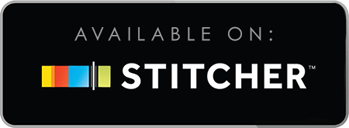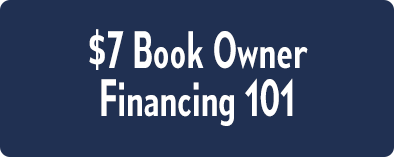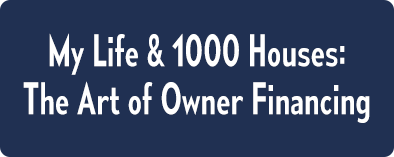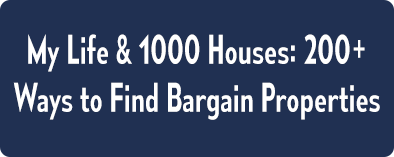PODCAST
Stock Market Simplified With Sean Tepper
Episode 451: Stock Market Simplified With Sean Tepper

Taking a breather from real estate, Mitch Stephen brings in someone who’s from a different world of investing but similarly devoted to helping others to find their way to financial independence. In this episode, software engineer and investor, Sean Tepper introduces an incredible tool that simplifies stock market investing so much that beginners will love it. With TYKR, an investor can arrive at a logical conclusion on whether an investment is viable or not within a matter of seconds. TYKR also has an educational component that guides investors through their stock market journey with investing tips and best practices. If you’re new to stock investing or you’re thinking about trying your hand in it, you should definitely listen to what this piece of software can offer.
—
I’m here with Sean Tepper. We’re going to be talking about stock markets and how to work that. First, I want to pay homage to my sponsor, LiveComm.com as in Live Communications. Go ahead and check out the video on the homepage. There’s a reason why the last 300 houses I’ve put up for sale have had an average of nine days on the market. I’m going to show you how I’m doing it, why I’m doing it, and why I don’t worry about sales anymore. It’s a cookie–cutter. Check out LiveComm.com, a lead generation plus mass texting equals your success. We paid the bills, Sean. Now it’s off to the fun stuff.
First of all, I want to make something clear, this not about real estate per se, or we may not even say the word real estate after this going forward until the end of this interview. The goal of this show has always been whether it’s me and my strategy, or one of the people that I’m talking to in their strategy. I don’t care who it is. The goal has always been for you to find your place in the world, go get financially independent so that you can become the person that you want to be. I don’t care who it is that you pick or where you find it, I just pray that you find it. I’m trying to help you by introducing you to people that do different things that are expert in what they do and who have found their independence through whatever it is they’re talking about, and maybe that’s you too. I don’t know, only you know.
If you’re like me, I didn’t even know what the hell for ten years. I kept trying until I found what I was supposed to do. When it happens, you know you’re supposed to do it. Also, I want to tell people that I did buy a lot of things, try a lot of things, go to a lot of seminars and do things that didn’t work out for me. It was a ten-year process for me to find where I belonged. I’m a slow learner and I was broke. We’re talking about the stock market. I don’t have anything in the stock market, but that doesn’t matter. There are millions of people that make millions or a living or do very well. Everything works if you work it and you become a pro. Did I get anything right in that introduction there?
With TYKR, you can make decisions based solely on logic. Within a few minutes, you will know whether a stock is a good investment or not. Share on XEverything was right. I can relate to your ten years of trying and experimenting. Before I got into this, I’ll talk about this tool I created, it’s a software, I had a lot of failures. It was ten years of investing in different types of businesses, internet businesses. My background is tech and had a few losses in there, but it was a necessary learning experience to bring me to where I am.
It’s part of the process. That’s what I was trying to do when I wrote my book, My Life & 1,000 Houses: Failing Forward to Financial Freedom. I didn’t know it at the time, but I was trying to formulate a way that I could fail and not go under, like not drown and die. Some people put it all on the line and they lose their house, their wife, their kids, and their car. That’s a hard place to come back from. I didn’t want to fail that bad. I know failure is part of the plan, but we don’t have to have devastation for God’s sake. What my theory was to figure out your basics to live at the time, mine was like 3,500 and just get that coming in, then never risked that. Everything you make above $3,500 a month, it’s research and development money. Go out there and fall on your face with it. If it doesn’t work, come back, get in your castle with a moat around, it’s called the moat theory. I can keep trying new things until I found out what worked for me without going under and having to start over from zero every time. If you go to zero, then you’re spending a lot of time just trying to figure out where you’re going to live, and then how am I going to get a car? This is too much time just worrying about survival.
Check your downside risk.
I didn’t want to go out there, fail, come back and go, “How do I fix that?” I didn’t want to worry about my bills or anything. I just want to worry about how to fix what happen out there. Get right on it. Give us a little background, Sean.
I’ll give you a little context here. My background is fifteen years in software engineering and the last couple of years I’ve been investing and I started investing or you could call it more Angel investing, which is investing in private businesses. They’re not public, they’re not stocks. Since my specialty is tech businesses, I invested in tech. I made some money, lost some money.
I have a question. Is Angel investing like a Shark Tank?
That is Angel investing, correct. They’re using their own money to invest in private businesses, that’s essentially Shark Tank. After several years, I didn’t make a whole lot. It was pretty much a breakeven model. If anybody is reading, if you’re investing in your return to zero, it’s not very good.
The problem with some of that is you’re dealing with probably new companies and then partners with these people. Even when I’m in partners with companies that are doing good, there’s a tendency to want to hold onto the money and grow with it like they never disperse any the money.
There are many problems. We could do a whole episode on the problems of investing in private businesses. One of the main issues is you don’t have historical data to make decisions whereas in the stock market you do. Around 2015, I’m like, “I got to change the game here. I can’t keep investing and not make a return.” I looked at the public market and I started following guys like Warren Buffett, Charlie Munger, my mentor is Phil Town, and started just reading what they’ve written. They’ve got a lot of calculations, a lot of formulas and I applied that and started creating an algorithm. I won’t go too technical here. I wanted a way to make consistent returns that are between 15% and 50% because these guys have talked about, they can make that consistently if they manage their own money. I’m like, “How do they do that?” I knew it wasn’t gambling, they’re not using emotions. They’re not guessing, it comes down to math. I figured out that math within the first year and I started making over 15%, I kept using this tool if you will, for the next years. I just wanted a way to make my life easier because I don’t want to use emotions in investing anymore. I was so sick of that. I was sick of wasting time.
I heard the people at a bank that they were all around the office at the happy hour, talking about how they’re all buying all this stock and it’s going to be great. I didn’t say a word. I went out and bought $100,000 worth of their stock. I figured if the people working for the bank are CEOs and price-wise, it’s the banker buying the stock, they know something I’m guessing they didn’t want to do insight information. I didn’t want to ask them. I didn’t want to know anything. I quietly went and bought my stock based on a rumor that I was hearing basically from some important people. It drove me nuts, going up and down every morning I’d wake up. I couldn’t live like that myself. I was doing by emotion. I didn’t have a stop. There’s a stop and there’s a loss.
That’s a whole other conversation, but you could set a stop loss. Let’s say stock is at a 100, you set your stop loss at 95. The stock goes down and it sells.
What happens when it gets so high it sells? What’s that called? I want you to sell it when it gets to this point.
That would be another stop. You set it higher. I like to set them on the downside. You want to let that baby ride. You want that stock to climb. If it’s going to 200 from 100, don’t stop it.
That’s my problem. I get scared. I’m going to sit in over here on $10,000.
You bring up a great point there. A lot of people make investment decisions based on emotions and they don’t know what to look at within the financials. It’s like reading a different language. When you look at the income statements, the cashflow statement of balance sheet between those three sheets, there could be 100–plus lines depending on the type of business, and where do you look? I figured out where to look and I applied those to a calculation, I can put in about 50 data points. Long story short, I could make decisions based solely on logic, no emotions. Within a few minutes, I know if it’s a good investment or bad and I just buy and hold.
With this tool, after about a couple of years of making between 15% and 50% per year, I started talking to some investors, some wealth management and institutions, and they said, “You’ve got to turn us into a software, to share with others.” That brought us to this last summer, 2020, where it launched and it’s live now, it’s called TYKR. It teaches you when to buy when to sell. It’s a stock screener. It’s not where you add your bank account information, like a broker like TD Ameritrade or Robinhood, you’ve probably heard of. It’s where you can find great investments. You can use that tool to make those investments and just let them sit. In those cases, they’re going to make money and that’s how I use the tool.
I’m an entrepreneur, so I want to know this. How big was the decision to create the software? Put it out there for people. Do you care to talk about how much you spent and how much time it took?

Stock Market Simplified: A lot of people make investment decisions based on emotions and they don’t know what to look at within the financials.
Over the duration of those couple of years, I was making changes. In software engineering, you call it duration. I probably made like a few hundred changes to the algorithm, just tweaking it here and there, the testing, my own money. I don’t want to test anybody else’s, I wanted all on me and I tested close to 1,000 stocks just to see how they would perform. I didn’t invest in all of them, but I wanted to see where they would go. That was over four years determining there’s something here and it works. That was mostly time as far as money going into it’s when I brought on a team to develop this. To be honest with you, I’ve built hundreds of software applications so I was able to bootstrap this. I have teams from offshores.
That’s not fair at all.
It is, just being wise with your expenditures at the end of the day. I was able to invest less than $50,000 to bring this business model to where it is now so far, which is pretty good. That’s a bootstrapping process. The alternative is I could have gone to a VC, Venture Capitalist, and raise some money but I like bootstrapping because you can ask more questions. You can move a little slower, which I feel can be important because you want to be highly engaged with your audience and get their feedback. Sometimes when you have VC on you, there’s pressure. We’re going to make returns and you can skip those important conversations that can take months to curate.
When you put out the software, did you know you were going to use it to the general public from the very beginning? When you know it from the beginning, you’ve got to go back and redo some things.
I wanted to use this to make my life easier.
That’s what I did with LiveComm. I needed a mass texting thing, but they were charging too much. I didn’t like what it did. What I wanted it to do, it didn’t do. I said, “Screw it.” What I did was I went to the software company and I said, “Can you do this?” I gave him my idea. They said, “We can do it.” They said, “This is a great idea,” when they saw my specific things and I said how great this idea is. They said, “It’s really good.” I said, “How would you like to own half the company?” They said, “How would we do that?” I said, “Build it for free.” I didn’t want to pay. Every time I get involved in software, I get screwed because I don’t know how to talk to anybody about it. I don’t understand it. I don’t know how to read the contract or set the parameters or anything. I thought this will be great. If you take half the company, then if you build a crappy product, you’ll have half of a crappy product. If you build a good product, you’ll have half of a good product. I don’t care because I’m just trying to get something to use for myself. If I can go sell it to the general public because it works well, then that’s a bonus.
Is this product you have live?
LiveComm.com, it’s a cellphone capture technology. The reason why I have nine days on the market is because I put out 25 bandit signs around on every house I ever sold. Every time they call that number to hear the recording, I’m capturing their cell phones. I have 8,000 people in my town who have raised their hand and said, “I want a seller finance house.” I can text them all for $0.02 apiece but I can bot text them. I can text them all at one time. I get targeted $0.02 apiece per recipient is like the cheapest. When you were developing your software, it was the same thing. You do have to spend time and money. Even if you don’t spend money, like my guys didn’t charge me. I still had to burn my candle, talking to them a lot more than I ever thought but you get it back.
I had two options. When I figured out I had something here and I started confirming with not only the institutions, the wealth managers out there, but also the general public that I’ve got a tool here. It works. It droves. It’s worked very well, but I ran into it, I wouldn’t call it an issue, but it was a fork in the road and there are two paths I could go. You could either create a wealth management company or a hedge fund, which I’d be managing people’s money and using the algorithm using it as a tool where people can use it or I could go the route that I’m familiar with is building tech. I’m pleased. I went the tech route because I’ve got self-directed investors that they’re not just here from the States. They’re out of Canada, India, the UK, France, Germany, even the Caribbean. I’ve got customers out of Jamaica. It’s all over the world, which is pretty cool. I’m building relationships with these folks and getting their feedback and what their needs are in each country. Believe it or not, there’s not a lot of countries with a stock screener or even a tool that teaches you how to invest in the stock market. It’s cool to find that need and solve it at a global level.
Someone uses your platform and change their life, do you have a success story yet?
Since it’s been launched for a couple of months now, I’ve got customers on it. I remember there are a few customers jumping in and within weeks they were telling me they were up on some stocks like we’re talking 30%, 40%, 50% in a matter of weeks. Those are high flying, fast–growing stocks. I built the software to be focused on value investing, which is very much Warren Buffett and Charlie Munger, Benjamin Graham, which is long-term buy and holds. A lot of those stocks are going to get between 15% and 50% but I will say there are customers in that range or if not beating that, which is pretty cool to see. As long as you don’t own too many stocks, you can beat the market.
One of your data points has to be like, who’s running the ship.
You mean me, right?
No. I’m talking about when the stop that you’re picking, one of the data points in the stock. Who’s the CEO of this company?
Let’s talk about that. Have you ever heard of the four M’s in investing?
No.
As soon as I say them, you’ll get it. The 4 M’s are the Margin of safety, which is the math behind investing. You have the Meaning, like do you know the business? The Moat, you mentioned moat on the show. You want to make sure you don’t have a lot of competition. You’re well-protected and then the last point is the Management like you were alluding to. If you can get the margin of safety right, you’re about 90% of the way there. TYKR does that for you. For the other three, you can’t use a software. You’ve got to number one, the meaning like you know real estate well. I know tech well. There are people out there I know that they know retail well. You should invest in what you know. There’s the moat as the business, hard to duplicate. You want to think about that. You want to look at how much cash they have on hand. For example, Apple has a great cash mode. They have $200 billion sitting there for R&D, not a lot of businesses can say that.
Management, this is something fun. I had a guy asked me about this on social media like, “How do you analyze a CEO?” What I like to do is look at their track record. Go to LinkedIn, look at what other companies they’ve led before and look at how the stocks of those companies have performed while they’re at those companies. If they were poor, it may or may not be their fault but you want to put together a track record. It’s like looking at a professional football player like, “Has this quarterback done well at this team? This running back, what kind of points have they put up?” Pay attention to those things. I know you are a football player, so you get it.
Everything counts. I’m telling people, “When you assess the value of a house, do you look at the tax assessment?” It’s not official, but it could be all over the map. It could be completely wrong but, “Yeah looking at it, it’s another data point. I just want to see what it says.” In the beginning and a lot as an entrepreneur, you run by the hair on your neck, which gives you your instinct. You go verify or drill down and get some solid stuff but you’re running like, “How does this feel? How does this smell?” As you find more data, you start that feel or smell is correct. It starts off the gut. “I don’t know why I like this but I like this house,” and in your case, this stock smells good, “Let’s dig into it.”
Don’t let your emotions take over. Even when your stocks drop, they will eventually recover if you can wait out the storm. Share on XYou don’t know the complete financials and you want to go a step further and understand if something you know if it’s well-protected and if it’s got a great leader.
Tell us about the software you have and I’m going to give people, what do you have a four–month trial, right?
No, two–week.
I’m sorry.
A fourteen-day.
I knew that there was a four in there somewhere. Go to 1000Houses.com/tykr, pretty cute and pretty smart. Get your fourteen-day trial. Check it out. I wish I was more astute in this area. What I’m going to do is tell you that if I haven’t covered any bases or there’s more you’d like to talk about, please tell us more about TYKR and tell us more about what you offer. I’m probably not smart enough in this arena to ask the questions. I’m just leveling with it.
I’ll lay out a question that I usually get asked is, “If somebody is completely new to investing, where do you start?” I’ll tell them that TYKR is the best place to start because it not only finds safe and reliable stocks you can invest in, but it also has an educational component too and not a lot of platforms have that. I made the educational component very approachable. I think most of us can agree the world of finance can be filled with big words and can seem like a foreign language. You don’t know what this acronym means or what this means. I dumbed it down so it’s very simple, easy to understand.
Let’s talk about diversifying. Real estate in stock markets, you see them a lot of times as a couple of the buckets that people have, is it typical for people doing what you do to also be in real estate?
Absolutely. I look at the two most popular asset classes to invest in and those two are stocks and real estate. They’re completely different. To give you a little context, I’ve got my podcast. I had a guy on and he’s a certified financial planner. He did homework and there are 450 different asset classes, real estate being one, stocks being another, funds could be another. It’s crazy like if you were to write down how many, I maybe come up with 100. Anyway, the two most popular for sure, stocks and real estate. I can talk briefly here about how one compliments to others. I look at real estate as a great reoccurring revenue stream. Every month, you’re collecting a check.
With stocks, you shouldn’t be doing that. You can, that you get to a certain point and it’s your sole source of income, great. The beauty of stocks is compounding momentum, that compound interest. If you’re getting 15%, 20%, 25%, or as high as 50%, a little bit of money can turn into a lot of money really quick. By really quick, I’m talking over the course of a few years. If you’re patient, it can grow very big. What I would do, and this is what I recommend. If you have real estate and you’re taking that income for yourself and you have some leftover, where are you putting it? “You buy more real estate?” That’s an option. That’s great but you could look at putting in the stock market because the returns if you invest in the right business, you can make pretty serious returns. That’s my two cents.
Let’s say someone is starting out, what’s the minimum or what do you start with? I know you can’t start with zero and I know probably $2 is not enough. Where’s the number? What do you need to get off the ground?
Easy, I tell people to start with $1,000. Just start small, maybe 2, 3 stocks, something like that. Try to look at different sectors and TYKR will guide you through that but it’s easy. Start small, watch it build, and then start adding more money to your brokerage accounts thereafter.
Let it roll. In my storage business, I have 1,300 units. Now, in the storage business, that’s nothing. Anybody in the world wishes they had 1,300 units, doors. I got 1,300 people that owe me $100 every month. Do the math. It’s $130,000 a month. I don’t get to keep it all but I get to keep a crapload of it. I got taxes, insurance, and electric bills and I’m still keeping a huge chunk of that. The first twelve years of that business, I never took anything out except for one, $2,000, all–inclusive vacation to Mexico a year is what my wife and I were awarded herself with for putting up with that damn business 365 days a year. That’s all I took out of it for twelve years because you’ve got to get up enough airspeed to not just get off the runway, but hopefully go like a jet and go vertical. We need to get up some speed.
I call that delayed gratification. You’ve got to go a certain time where it’s minimal payments to yourself or no payments like you talked about.
I think in my humble opinion, you tell me, but this is the thing you’re starting at $1,000. You’ve got a job that’s taken care of everything. This is just over here. You shouldn’t be paying attention to how long it’s been since you’ve taken money out. You shouldn’t be paying it just that you shouldn’t be paying attention to how to make it grow exponentially and studying your mistakes and the good things you did. Just keep playing this game over here so you become an expert or expert enough at the level you need to get happy with what you’re doing.
Here’s what I have to share with you. One of my customers posted a video on our Facebook group that was an excellent story, it’s an animation and I’ll keep it high level here. It’s really fun. A guy, his name is Bob and they use fictional character. He bought at market peaks in the ‘80s. I think it was a dot-com bubble and then 2000s. Peak being the highest point, you shouldn’t buy high. You should buy low. He bought at these pivotal points in history at the highest point, but start in the eighties and he never sold. That’s the discipline. He never sold the stocks. I think he started with a few thousand dollars and he kept increasing that over and over through the years. Over the course of 30 years, he had over $1 million saved. Even if you buy high, the lesson here is you still want to hold because most people let emotions take over. They buy high, the stock drops, and guess what? They sell. If you can wait out the storm, those stocks do recover.
Since it’s a long wait period, and you’re not going to take it, can you do this in your IRA or your self-directed 401(k) or self-directed IRA? Wouldn’t it make sense if you’re going to have to wait to touch your money anyways, why don’t you put it into tax–deferred or even tax? I say tax–free vehicle IRA, the amount of tax you pay. If you’re only starting with $1,000, that means you’ve got to pay $1,200, you’ve got to pay $200 in tax, and then you’ll never get taxed again.
What I recommend doing is there are different categories like I have my investment account, but I have a Roth IRA, so of course, I pay the taxes now. Years down the road, I don’t have to pay the taxes. What I recommend is keep your money in your brokerage and what you sell and withdrawal, that’s what you pay taxes on. There are some people that will get to retirement and let’s say they’ve got $1 million in a TD Ameritrade account and they sell it all. Unfortunately, that goes right into savings, but the worst part about as they’re paying taxes.
You didn’t need $1 million now, you just need $1,000 a year. Don’t throw yourself into the high tax bracket, just take what you need that year. Hopefully, it makes back the $100,000 you took.
You leave it in your brokerage and you let it keep growing. You only take out, like you said, $100,000 a year and you’re living a pretty good life in your retirement.
$100,000 is 10% of a million. If you’ve got $900,000 and you’re making 15%, you’re recouping the $100,000 you took out plus more. I always say this, there’s no breaking even. You’re either getting ahead or you’re losing. There’s no breakeven. There’s no such thing as neutral. There’s no such thing as breaking even. You’re either putting money into that account and getting ahead or your balances dropping. A stay like this is damn near impossible. Set up a plan to where if you’re taking out a $100,000 a year because that’s what you need to live or that’s what you need to add to what it is you have, then try to make sure that the accounts making $115,000 a year and leave at least go by $15,000. Just make sure you’re on the growth side of the equation. If you’re taking out $100,000 and you’re losing $10,000 a year, maybe you should only take out $90,000.
You’ve got to adjust.

Stock Market Simplified: TYKR not only finds safe and reliable stocks people can invest in. It also has an educational component.
You should only take out $80,000 so that at least you’re grilling by $10,000 a year. You always want to be growing is my thing. Go to 1000Houses.com/tykr, you’re going to get a fourteen-day trial. Is there any coaching or mentoring? If they’re going to go there and get this thing, is it going to be hard for them to figure out? Do they need to hire a consultant or do they just need to watch some videos or what happens?
It is easy to use. Once you join, you’re going to immediately get an email and it’s got a guide, twenty different tips. Those tips are also spread across emails over the next twenty days and the tool, it is extremely intuitive. I tried to create like using an iPhone. I don’t know if you’re an iPhone user, but super easy, big buttons, less noise, very little text. There are some texts you can read to learn about the tool, but most people have said it’s intuitively easy to understand.
I want to thank you for taking the time to come on.
Thank you.
I want to thank LiveComm.com. I want to thank them for being a sponsor of the show. I want to thank the readers for stopping by to get you some Sean Tepper, and please go over there and check out his software. You can’t lose anything by doing this. You might end up stumbling into a whole different career, but one of the things, Sean, you’ll get this. I talked to people and things are so interesting. I am curious about your product like I almost want to go over there myself. I’ve got eight companies and too many things to do, but there’s this part of me that says, “You need to write this down because if it all goes to hell one day, I’m going to go talk to Sean.” I’m going to get on it with anyone. I have this list. If it all goes to hell, this is where I’m starting over again. I’m going to put you down on that list.
Please do.
The other thing, when you have a good thing going, sometimes it’s best to stay in your lane. If you’ve been thinking about doing this anyway or you’re going to do it anyway, whether you have a good thing going or not, then check it out. 1000Houses.com/tykr. Thanks for stopping by to get you some Sean Tepper, we’re out of here.
Mitch, thanks a lot.
Important Links
- 1000Houses.com/tykr
- 1000Houses.com/Grow
- 1000Houses.com/Livecomm
- 1000Houses.com/100
- 1000Houses.com/101
About Sean Tepper
 I created software that allows investors to earn between 15% and 50% consistently in the stock market. Whereas the average financial advisor will return 6%.
I created software that allows investors to earn between 15% and 50% consistently in the stock market. Whereas the average financial advisor will return 6%.
I’m the Founder & CEO of TYKR, a platform that gives beginner as well as advanced investors the power to manage their own investments and BEAT THE MARKET! TYKR has proven to generate consistent returns between 15% and 50% per year (compared to the average return of 6%).
It took 5years to build TYKR and in the summer of 2019, I achieved what you would call the “aha” moment. I backtested TYKR through the 2008 recession and here are those surprising results :
- In 2008, the S&P 500 went down 38%. TYKR was up 24%.
- In 2009, the S&P 500 went up by 23%. TYKR was up 72%.
- In 2010, the S&P 500 went up by 12%. TYKR was up 96%.











